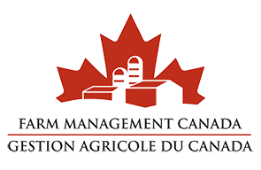Category: Management | Topic: Business Management
Posted Date: January 31, 2022

The context
Business risk management (BRM) is most often understood in reference to federal or provincial risk management programs aiming at mitigating the consequences of financial and production uncertainties.
But business risk management is more than that.
The approach of business risk management is also about reducing or eliminating risk by taking proactive, systematic action to ensure resilience to potential impacts resulting from known or unknown threats. This approach does not and should not exclude reactive supports, but can enable farmers to rely more on themselves to build holistic durability and adaptability into their farms. They can do so by having a plan to prevent, mitigate, and manage not only what can be controlled, but what cannot be controlled.
What are the risks?
Farms have many moving parts, which increases their exposure to risk. Risks on a farm can impact its people, finances, and production, while risks off the farm may be posed by the markets and business environments.
Risks to people include issues related to farm safety, well-being, working relationships, family lives, and external contractors and advisors.
Financial risks include issues related to financial management, business strategy, and any investments.
Production risk may be caused by climate change, the local environment, the health and welfare of animals, nutrient management, pests, soil quality, water quality and quantity, biodiversity, or changes in technology, operations, or the farm’s crop and livestock profile.
External risks include changes in the markets, such as sourcing issues, pricing, sales, and trade; with COVID-19 being a timely example of how uncertainty can disrupt global supply chains, the workforce, and consumer behaviour.
The business environment in which a farm operates is also constantly changing due to issues related to public trust, consumer advocacy, and changes in demand, policy, and regulations.
That’s a lot of variables to keep track of, but there’s a good deal farmers can do to reduce their exposure through adopting a business risk management plan—which they can do at low or no cost to their businesses. In fact, having a business risk management plan may even reduce running costs and the potential for significant and unexpected losses in the future.
What does it mean for farmers?
Business risk management can’t control the weather, but it can reduce the impacts of increasingly unpredictable and extreme weather patterns. For farmers, business risk management represents an opportunity to build resilience and self-reliance into their farms.
The cost to design a business risk management plan is low, but it may mean some operational changes and an up-front investment of time and energy—a small price to pay if it means crop can still be grown and sold despite whatever surprises are turning up dust down the road on their way to the farmgate.
If your farm doesn’t have a succession plan or if you’ve noticed changes in your local environment are impacting performance, a business risk management plan may be for you.
What can farmers do to manage risk?
The truth is, farmers can’t prepare for every possible situation that may or may not arise in the future any more than the rest of us can, but that’s not the point of business risk management. So, what is the point, and what can you do? Well, the point is to situate your own farm in the context of issues currently facing and that may arise in the world, and here’s how:
-
- Identify the risks unique to your own farm’s context
- Assess your current strategies to address these risks
- Identify any risks requiring better management
- Develop a plan to improve your risk management practices
Some questions to ask yourself could include:
- Do you hold regular meetings with your staff / partners / family / board of directors to discuss your farm's values / objectives (short and long term) / strategy?
- Do you have standard operating procedures on your farm?
- Have you trained your staff on farm safety?
- Have you started talking about farm succession? (Who? When? How?)
- Do you have contracts with suppliers and buyers, or do you rely on handshake agreements? Do you use forward contracts for selling your products?
- Do you have an environmental farm plan?
These questions provide a start to managing risk on your farm and will lead you down a path to better risk management.
But business risk management isn’t just about preparing for negative impacts; it’s about transforming unpredictable circumstances into opportunities that may even benefit your farm compared to the one down the road. In fact, Canadian farmers are well positioned to become leaders in risk management, with the Next Policy Framework representing an opportunity to redefine business risk management.
THE GOOD NEWS
The good news is that you don’t have to have all the answers (or even all the questions), and you don’t have to do all of this from scratch—AgriShield can help.
AgriShield is an online platform that will help you to develop a business risk management strategy. It starts by asking some simple questions related to risks on your farm and its potential impacts, and then drills down into those risks with some more specific questions related to what current practices you already have in place.
You can then use AgriShield’s action-planning tool to decide what actions you can take to make your farm more resilient during what may otherwise be a frustrating, confusing situation.
If you want to get more advanced, try out our training programs to understand and apply whole-farm risk management. We are currently offering a free program funded by the Government of Canada’s AgriRisk Initiatives.
 Skip to main content
Skip to main content
